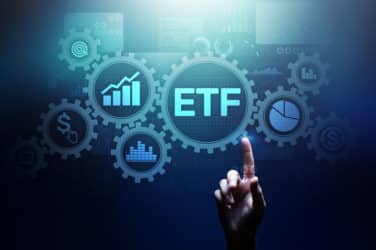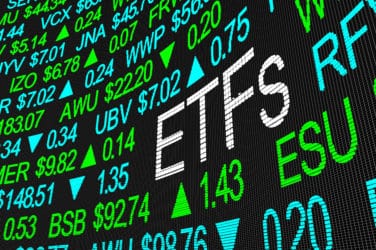
With Lindsey Spink, Co-Head of Global Fixed Income Trading, American Century Investments
Discuss your professional background and current role/responsibilities at American Century.

I am currently in year 19 of my fixed income career which has covered the spectrum of institutions. After completing the analyst program at Goldman Sachs (Spear, Leeds & Kellogg) I made the move to asset management, joining Weiss, Peck & Greer where I learned fixed income portfolio management from a great mentor, Sid Bakst. After a brief trading stint at AXA-IM, I was hired by industry legend Gene Boehringer to help build the fixed income trading desk at GIC in London. The next nine years were a master class in markets and regions, spent working between London and NY, and being exposed to every security type and strategy under the sun.
After a four-year stint at HSBC-IM to build out execution trading Americas, I have found what feels like home in American Century Investments (ACI). Similar in culture and purpose to GIC, ACI leads by doing, with 40% of ownership and dividends going to the Stowers Institute for Medical Research. I would challenge anyone to find an asset management firm with a greater positive ESG impact. I am currently the Co-Head of Global Fixed Income Trading, focused on expanding our dedicated FI trading platform and systems.
How would you characterize the state of liquidity in fixed income markets you trade, say in 2022 compared with previous years?
Liquidity in 2022 is like conviction — a mile wide and an inch deep. 2022 has truly been a year of the haves vs have-nots. Primary deals 0-6 months since issuance have been net bought year to date, whereas bonds that are older have been net sold. This makes sense on two fronts: asset managers want to be in the most liquid bond, and less price discovery needed saves time. Price discovery on secondary trading takes a lot of time throughout the day, and even if we can zero in on an appropriate level of where a bond with similar characteristics should trade, there is no certainty you can get execution at that level.
Further, when investors aren’t changing their allocations from underweight to market-weight, or from market-weight to overweight, or with other factors that temporarily pause buy mandates such as rates, hedging costs, and valuations, the Street is less likely to provide tighter bid-offer markets, because they have less outlet to recycle risk. The result is that the actively traded universe shrinks to anything newly issued and larger-cap names, and the smaller, and ‘off the run’ bonds become increasingly illiquid. Liquidity has continued to migrate outside of traditional channels which makes the need for new technology more urgent.
What is your biggest “pain point” with regard to liquidity sourcing?
One pain point is the broad, thin nature of liquidity in the spread market. Throughout 2022, speaking to my point about low conviction and a depressed buyer base, we have seen ETF $1-2mm buy/sale prints cause complexes to “rerack” materially wider or tighter. Another pain point is portfolio trading prints that are either outside of the quoted market or on the extreme wings of the bid side or offer side.
Gaining access to new pools of liquidity is very difficult with legacy systems. Moving a large ship towards the standards of application programming interface (API), algorithms, and execution management system (EMS) is not simple. The fixed income market is not going to “equify”, but it is evolving with its own set of new standards and practices.
How does volatility change liquidity, and by extension how you trade?
Volatility paralyzes both sides of the phone, buy and sell side. When we see any semblance of rate stability it gives the buy side confidence to deploy cash for specific mandates. We have seen a lot of yield-sensitive buyers in 2022 in various parts of the curve, and when rates are up and down 10 basis points a day it disincentivizes accounts from deploying cash. Uncertainty is a killer to confidence. Low volatility is much better for the buy side, as it forces market makers to tighten the bid-ask while increasing the size menu for trades. High volatility means bid-asks widen, sizes shrink and banks’ trading revenues skyrocket.
Is fragmentation in fixed income markets a significant challenge in sourcing liquidity, and how do you navigate this?
With the rise in ‘all to all’ based functionality we have the ability to reduce trading costs by virtually eliminating the bid-offer, and increase the number of trading counterparties. Portfolio trading is another tool utilized by the buy side to quickly take risk on and off in size, and reposition portfolios with very little friction. In addition, it’s good to recycle less liquid risk as a portfolio trade vs a single name trade.
The challenge is gaining access to these protocols, and getting everyone on the same page about new market tools is a heavy lift.
What is the role of trading platforms in providing liquidity?
Trading platforms have made great strides in portfolio trading and all to all. Platforms aid the FI market by solving for the time-consuming, yet low touch trades on fixed income desks. If we have a small flow and need to trade 200 line items in small size, platforms save major work hours for trades with little value-add. This has led to greater efficiency and lower headcount needs across the buy side. One negative outcome is the lack of trained traders. When I started out trading, I would run around the trading desk and hand-price long lists of odd lots. This gave me an understanding of markets, trader styles, buy-side account workflows and pricing. Today’s junior trader gains nothing from trading lists on platforms and is pushed into the deep end without proper market experience.
What is the value of old-fashioned relationships in liquidity sourcing?
Relationships are still at the core of spread product trading. Developed markets rates and FX have become less human-capital intensive. Where traders add value is in the less liquid spaces of investment grade, high yield, emerging markets, and treasury inflation-protected securities (TIPS), where there is a pecking order.
If you build solid partnerships with balance sheet dealers, they will allocate more of their finite resources to you. If you squeeze every penny out of a bank they will simply re-allocate that resource to another partner. The goal is to get early looks on axes, solid allocations on new issues, and quality market color. This comes from a place of trust and consistent behavior. You can spend years building trust and burn it down in one trade, so to me it’s about smart and dignified market interactions. I have worked at firms where we were filled on most new issues, while at other firms it was a paltry 40%. Process played much more of a part in fill rate than AUM. The job is so much easier when by partnering you are given access to liquidity and filled on new issues.
What is your trading desk doing to more efficiently source liquidity?
On the technology front we are looking at the potential benefits of an EMS. Pre- and post-trade analytics save a ton of brain power, while adding direct API connectivity keeps us in the flow of liquidity, which we really need to centralize. The other tools would be very similar to the generic talking points covered at most conferences, including portfolio trading and ETFs.
What do you see for the future – what might change the dynamic one way or the other in terms of sourcing liquidity?
I am all-in on continued partnerships with our key counterparties. As the rest of the world looks at ways to electronify the FICC space, I am looking at easier ways of connecting with our top dealers. ACI adds value for our clients through deep analysis of the companies and countries we invest in. My trading team is aligned with the portfolio managers and research teams to generate outperformance as active managers. This means we pick up the phone and spend time with our market partners. We have a great opportunity to be countercyclical by having a trading desk that embraces technology, but also knows that we are in the investment industry.






